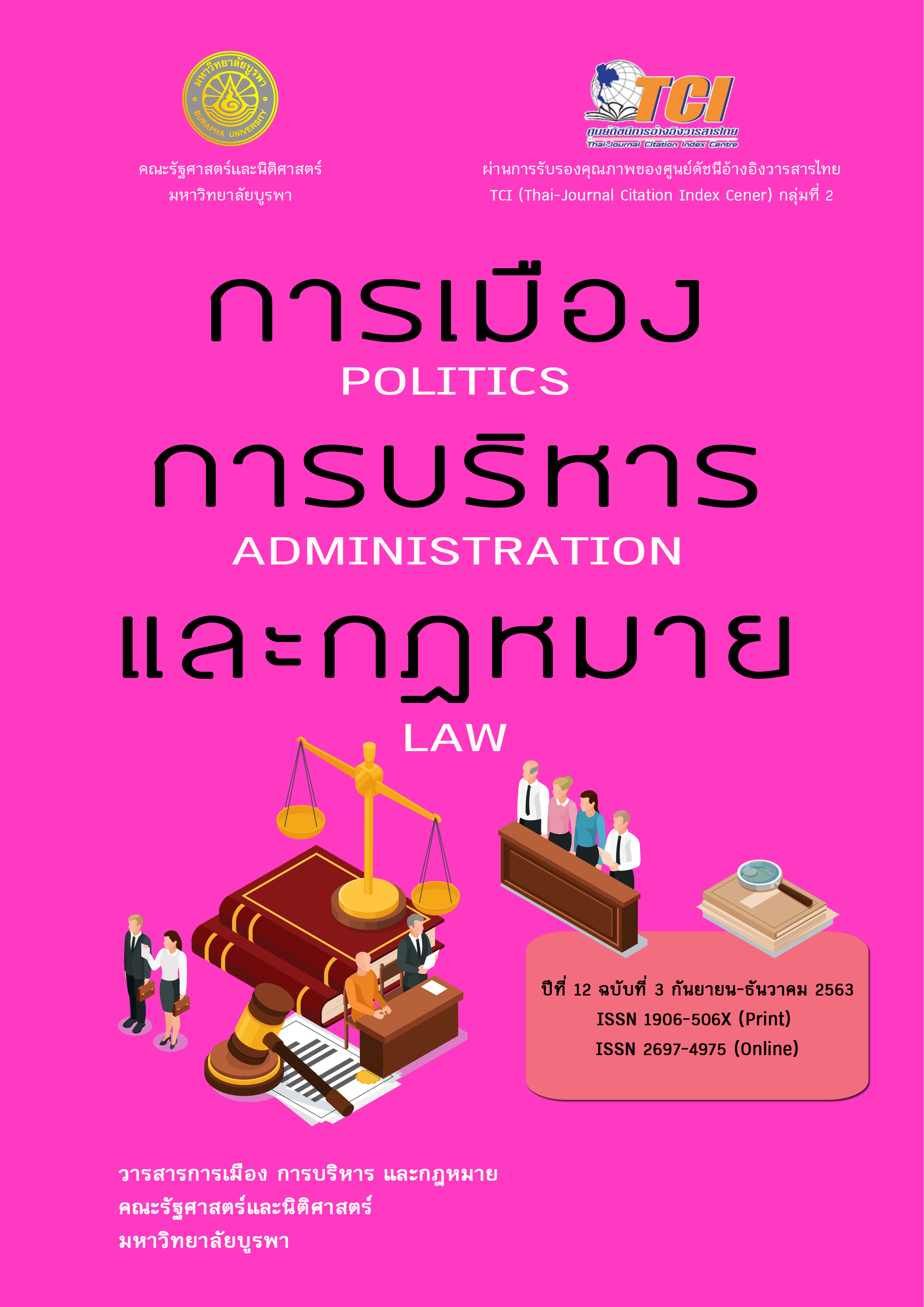ปัจจัยที่มีอิทธิพลต่อความสำเร็จด้านคุณภาพบริการสำหรับการดำเนินธุรกิจโครงการรถไฟฟ้าเชื่อมท่าอากาศยานสุวรรณภูมิ
คำสำคัญ:
คุณภาพการให้บริการ, รถไฟฟ้าเชื่อมท่าอากาศยานสุวรรณภูมิ, SERQUAL Model 10 มิติบทคัดย่อ
ปัจจุบันจำนวนผู้ใช้บริการรถไฟฟ้าเชื่อมท่าอากาศยานสุวรรณภูมิ (SARL) มีอัตราต่ำกว่าเป้าหมายที่คาดการณ์เอาไว้มาก ทั้ง ๆ ที่มีผู้ใช้บริการท่าอากาศยานสุวรรณภูมิและผู้อาศัยตามแนวเส้นทางรถไฟฟ้าจำนวนมาก ผู้วิจัยจึงได้ทำงานวิจัยนี้ขึ้นมาเพื่อ 1) ศึกษาปัจจัยที่มีอิทธิพลต่อความสำเร็จด้านคุณภาพบริการสำหรับการดำเนินธุรกิจโครงการรถไฟฟ้าเชื่อมท่าอากาศยานสุวรรณภูมิ 2) สร้างแนวทางและข้อเสนอแนะเพื่อปรับปรุงด้านคุณภาพบริการสำหรับการดำเนินธุรกิจโครงการรถไฟฟ้าเชื่อมท่าอากาศยานสุวรรณภูมิ ซึ่งการวิจัยนี้เป็นการวิจัยเชิงปริมาณ โดยมีการเก็บรวบรวมข้อมูลจากแบบสอบถามที่แจกให้แก่ผู้ใช้บริการรถไฟฟ้าทั้งหมดจำนวน 413 คน การวิเคราะห์ข้อมูลใช้สถิติเชิงพรรณนาและการวิเคราะห์ถดถอยพหุคูณ ตัวแปรต้น ได้แก่ เพศ อายุ อาชีพ สถานภาพ ระดับการศึกษา รายได้เฉลี่ยต่อเดือน และความถี่ในการใช้บริการรถไฟฟ้า และตัวแปรตาม คือ ความสำเร็จด้านคุณภาพบริการของรถไฟฟ้าเชื่อม ท่าอากาศยานสุวรรณภูมิซึ่งวัดจาก SERQUAL Model 10 มิติ จากผลการวิจัย พบว่า อายุเป็นปัจจัยที่มีอิทธิพลมากที่สุดต่อความสำเร็จด้านคุณภาพบริการสำหรับการดำเนินธุรกิจโครงการรถไฟฟ้าเชื่อม ท่าอากาศยานสุวรรณภูมิ โดยมีความสัมพันธ์เชิงลบ และคุณภาพการบริการที่แย่ที่สุดของรถไฟฟ้าเชื่อม ท่าอากาศยานสุวรรณภูมิในการศึกษานี้ คือ มิติด้านความน่าเชื่อถือ (Reliability) นอกจากนี้ จากการศึกษา พบว่า SERQUAL Model สามารถวัดคุณภาพบริการรถไฟฟ้าได้เป็นอย่างดี เมื่อทราบปัจจัยที่มีอิทธิพลต่อความสำเร็จด้านคุณภาพบริการงานวิจัยนี้ได้ให้ข้อเสนอแนะหลัก ๆ 2 ข้อเพื่อให้การบริการรถไฟฟ้าเชื่อม ท่าอากาศยานสุวรรณภูมิ มีประสิทธิภาพสูงขึ้น คือ 1) ผู้บริหารและผู้มีส่วนเกี่ยวข้องควรรีบปรับปรุงคุณภาพการให้บริการให้เกิดความเชื่อมั่นที่สูงขึ้นอย่างเร็วที่สุด โดยต้องบริการตรงตามสัญญาที่ให้ไว้ ตรงเวลาและให้บริการตามความต้องการของผู้ใช้บริการ เพื่อสร้างความพึงพอใจให้แก่ผู้ใช้บริการ 2) รัฐบาลควรร่วมมือกับ รฟท. และ บริษัท รถไฟฟ้า ร.ฟ.ท. จำกัด ในการจัดสรรงบประมาณในการซ่อมบำรุงรักษาระบบรถและงบประมาณในการซื้อและจัดหาอุปกรณ์อะไหล่ที่จำเป็นสำรองไว้ เพื่อให้การบริการไม่เกิดการหยุดชะงักอันเกิดจากความขัดข้องของระบบรถไฟและระบบราง ort_335@hotmail.com
เอกสารอ้างอิง
Coogan, M. A. (1995). Comparing airport ground access: A transatlantic look at an international issue. TR NEWS, 181, 2-10.
Joshua, S. (1999). Airport access via rail transit: What works and what doesn’t (Master's thesis, Massachusetts Institute of Technology, MA, US). Retrieved June 30, 2019, from http://dspace.mit.edu/handle/1721.1/9382
Markovic, S., Raspor, S., & Komšic, J. (2012). Service quality measurement in Croatian wellness tourism: An application of the SERVQUAL scale. Academica Turistica - Tourism and Innovation Journal, 5(1), 47-58.
Moreno-Gil, S., Hudson, S., & Aguiar-Quintana, T. (2006). The influence of service recovery and loyalty on perceived service quality: A study of hotel customers in Spain. Journal of Hospitality & Leisure Marketing, 14(2), 47-68.
Parasuraman, A. P., Zeithaml, V. A., & Berry, L. L. (1988). A Conceptual Model of Service Quality and its Implication for Future Research (SERVQUAL). Journal of Marketing, 49, 41-50.
Wu, P. H., Huang, C. Y., & Chou, C. K. (2014). Service expectation, perceived service quality, and customer satisfaction in food and beverage industry. International Journal of Organizational Innovation, 7(1).
Yamane, T. (1970). Statistic : an Introductory Analysis (2nd ed.). New York: Harper & Row.
Bowersox, C. J., Calabro, P. J., & Wagenheim, G. D. (1981). Introduction to Transportation. New York: McMillan.






